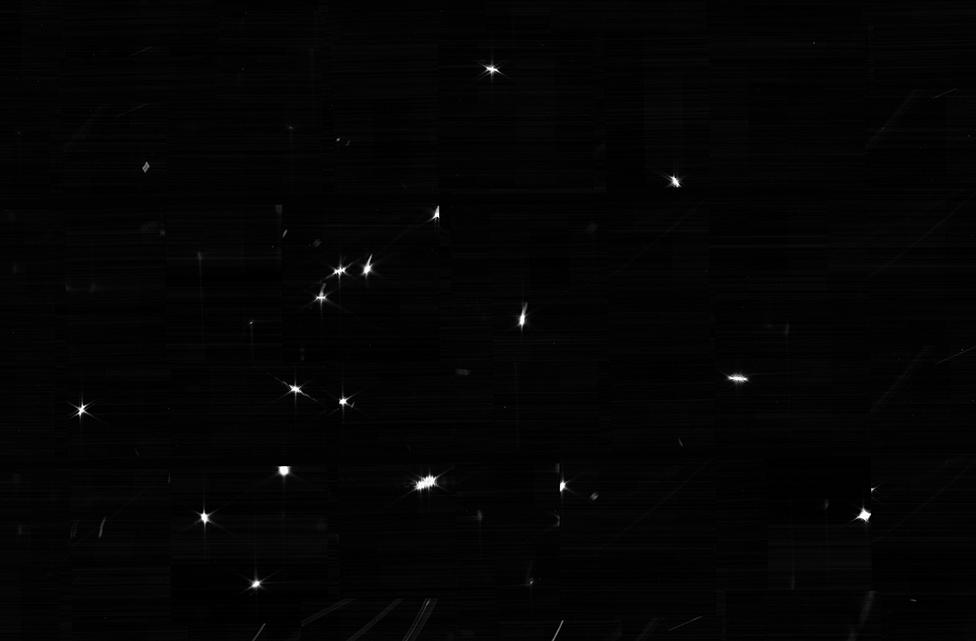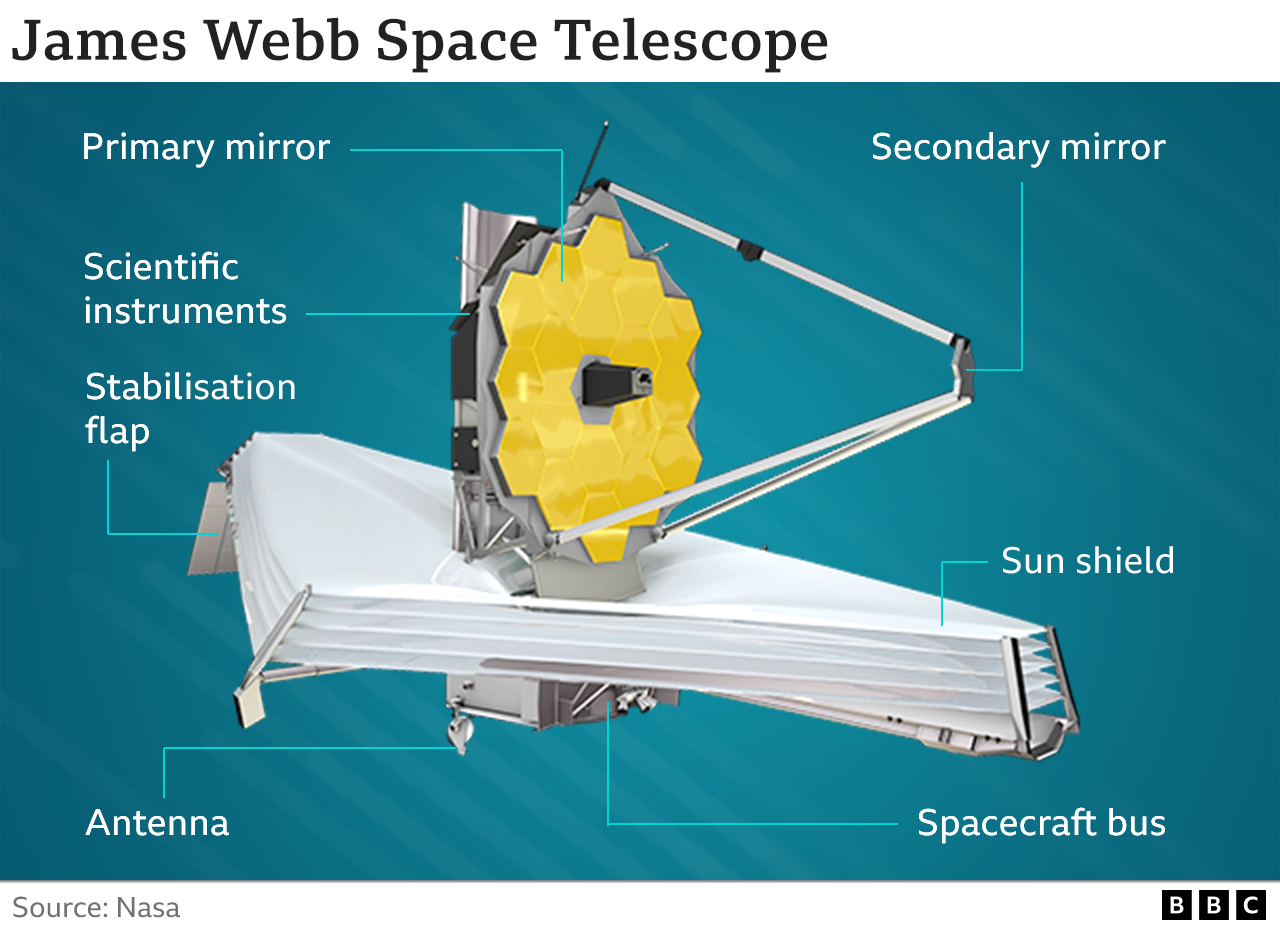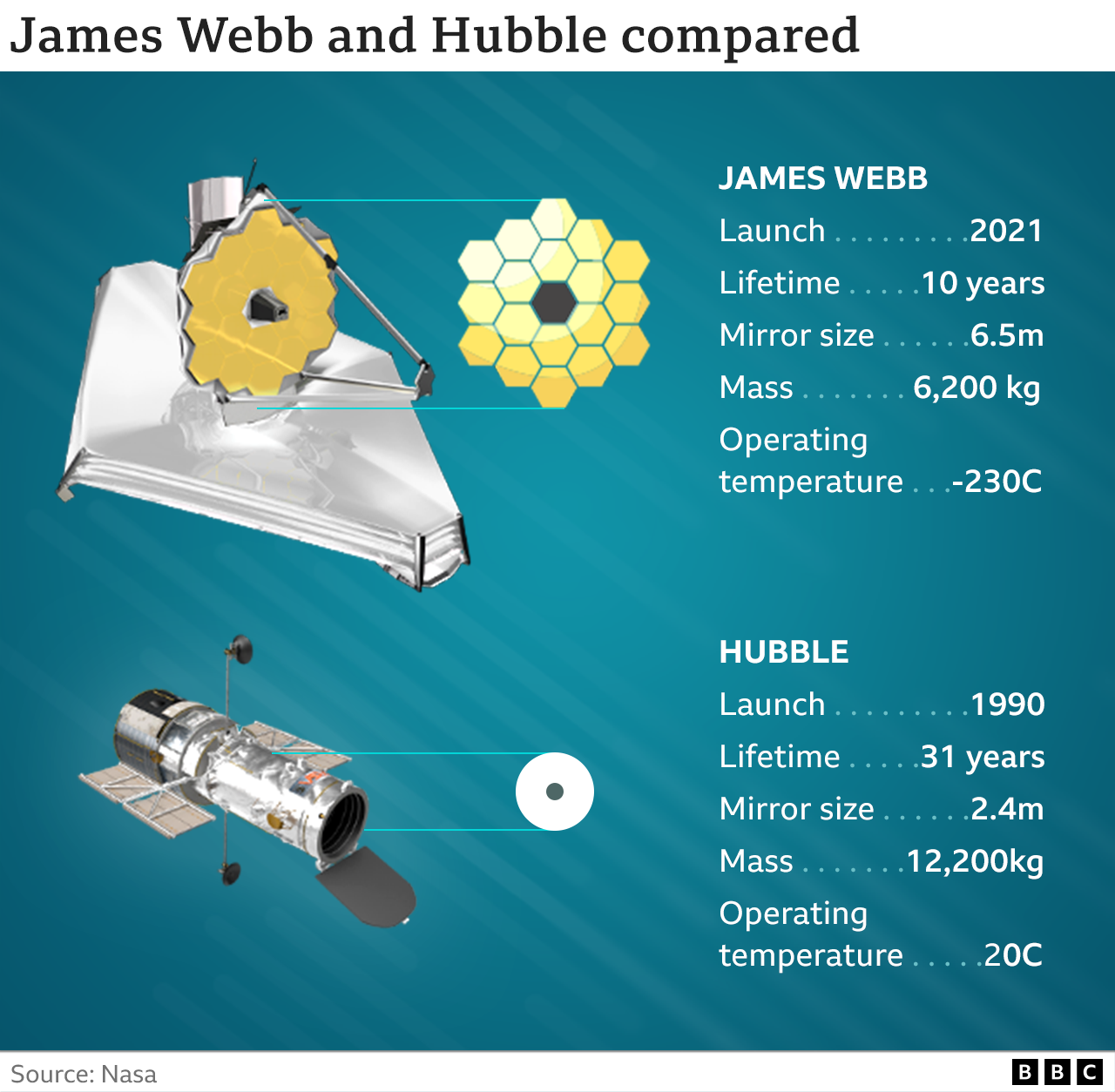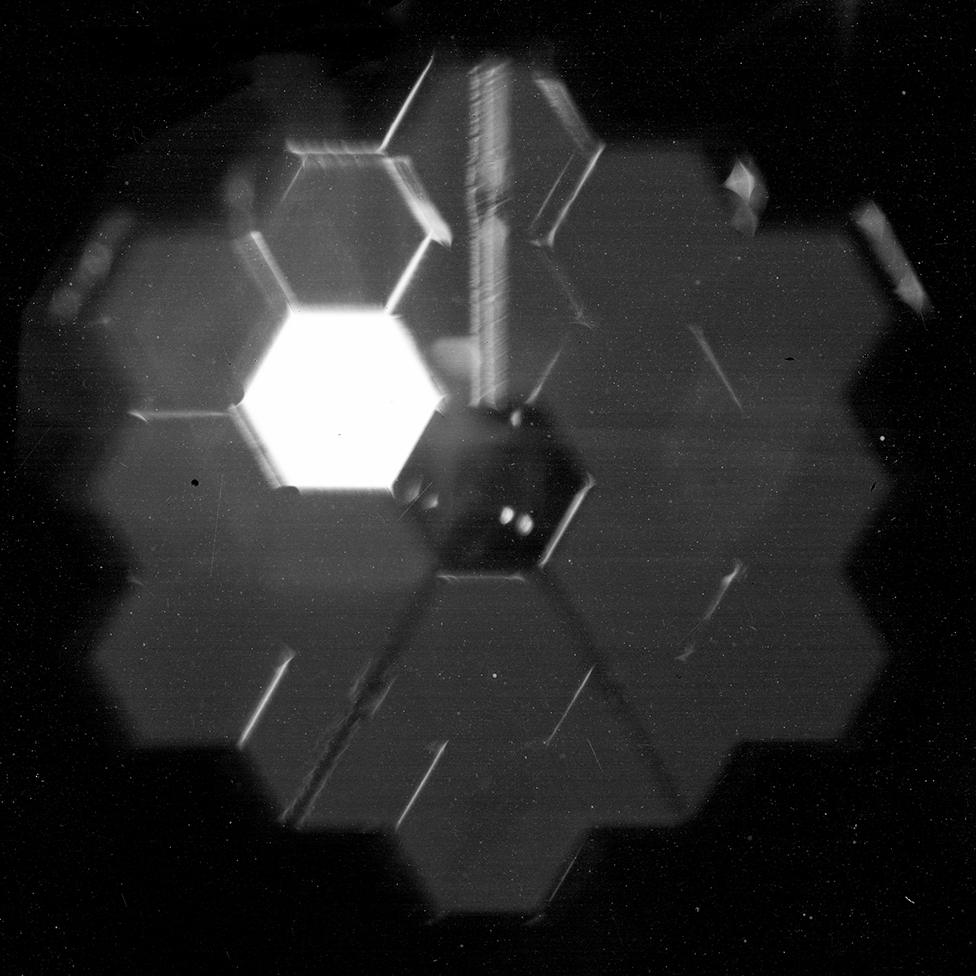James Webb telescope begins to focus its 'big eye'
- Published

It's a confusing but amazing image.
Count the number of dots in the picture above. You should see 18.
Each one is a star - the same star but viewed differently in the 18 segments of the giant golden mirror on the newly launched James Webb Space Telescope.
Engineers are now adjusting the segments to make them work in unison.
When the 18 dots map perfectly on top of each other, Webb will be focussed and ready to study the cosmos.
It will take a while, at least a couple of months, and science teams will also have to tune the telescope's four instruments.
But when all the preparations are done, Webb is expected to return some astonishing views of deep space. We should see the first "Wow!" imagery released by the US space agency (Nasa) in June or July.

Astronomers intend to use the $10bn observatory and its remarkable 6.5m-wide primary mirror to capture events that occurred just a couple of hundred million years after the Big Bang. They want to see the very first stars to light up the Universe.
They'll also train the telescope's "big eye" on the atmospheres of distant planets to see if those worlds might be habitable.
Webb is considered the successor to the veteran Hubble Space Telescope, but much, much bigger. It is so big, in fact, that it had to be folded to fit inside its launch rocket. And that included the giant mirror, which had its sides tucked back like a drop leaf table.
Of course, once in space, the mirror had to be opened back out and the 18 segments of the beryllium-gold structure released from the locked positions they'd been put in to keep them safe as the rocket rumbled its way to space.

Now, engineers are in the process of commanding small motors on the backs of the segments to reposition them. By pulling or pushing on struts, it's possible even to change the curvature of the segments.
The aim is to take an initial misalignment measured in millimetres to one measured in mere nanometres - a factor of a million improvement.
The way to do this is to stare at one particular bright star in the sky and track how its reflection shifts in the different segments.
The work is driven by Webb's Near-Infrared Camera (NIRCam). This instrument has also generated a kind of "selfie" of Webb's primary mirror.
The image below, which shows all 18 segments, is the view Webb's secondary mirror has of the main reflector. The secondary mirror sits out in front of the main mirror on 8m-long booms and has the job of bouncing light towards the instruments.
The selfie was created using a specialised pupil imaging lens inside NIRCam. In the image, one of the mirror segments glows more brightly than the rest because it was pointed at a bright star, while the 17 others weren't in the same alignment.
James Webb is a joint project of the US, European and Canadian space agencies.

